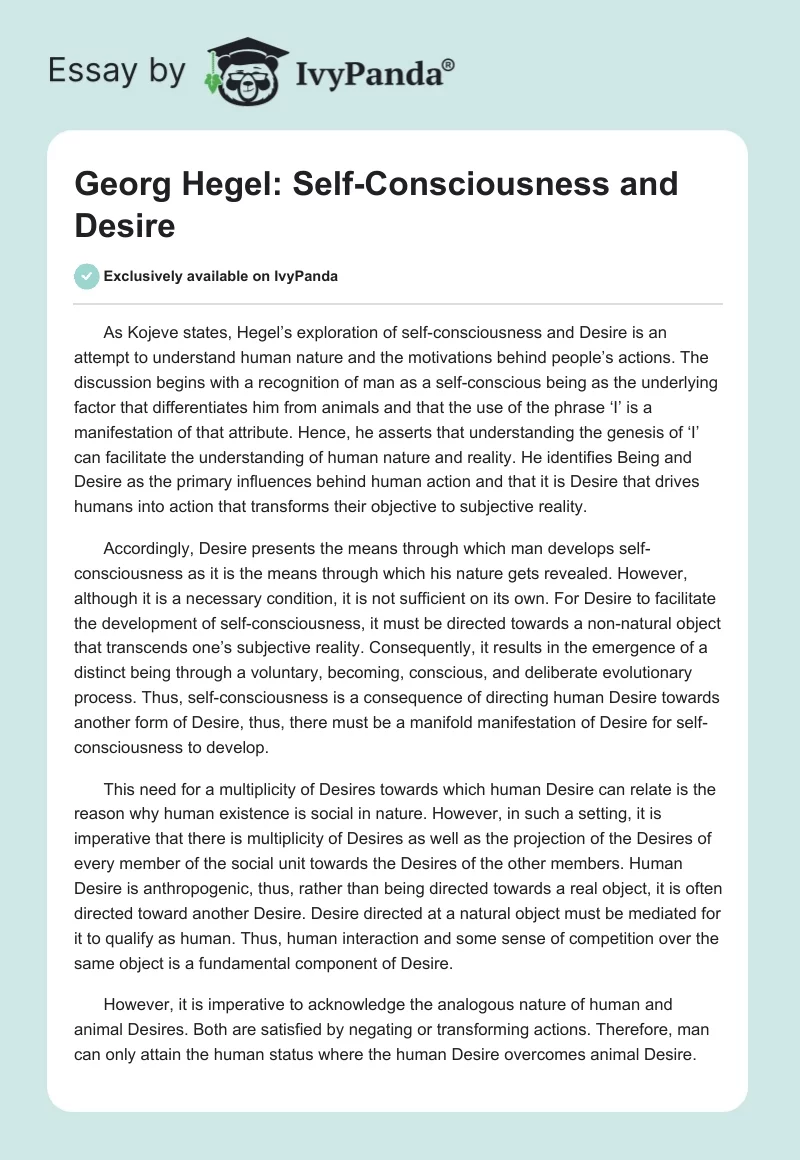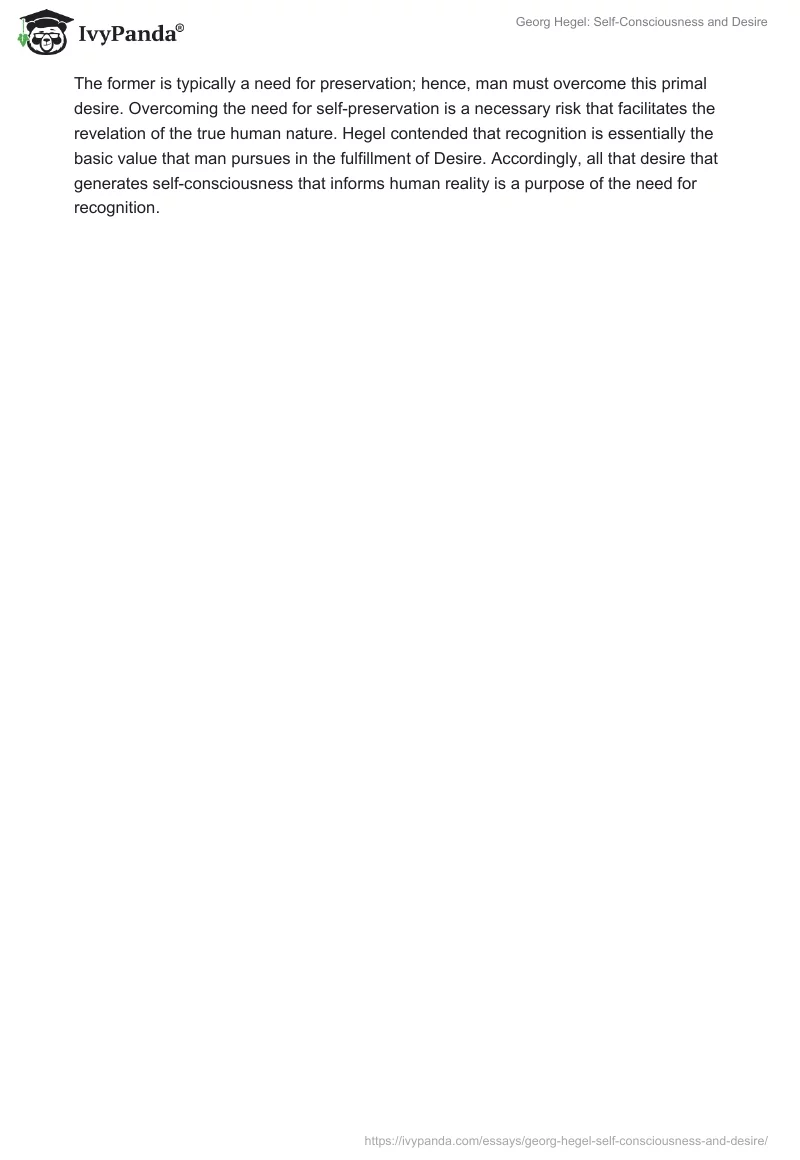As Kojeve states, Hegel’s exploration of self-consciousness and Desire is an attempt to understand human nature and the motivations behind people’s actions. The discussion begins with a recognition of man as a self-conscious being as the underlying factor that differentiates him from animals and that the use of the phrase ‘I’ is a manifestation of that attribute. Hence, he asserts that understanding the genesis of ‘I’ can facilitate the understanding of human nature and reality. He identifies Being and Desire as the primary influences behind human action and that it is Desire that drives humans into action that transforms their objective to subjective reality.
Accordingly, Desire presents the means through which man develops self-consciousness as it is the means through which his nature gets revealed. However, although it is a necessary condition, it is not sufficient on its own. For Desire to facilitate the development of self-consciousness, it must be directed towards a non-natural object that transcends one’s subjective reality. Consequently, it results in the emergence of a distinct being through a voluntary, becoming, conscious, and deliberate evolutionary process. Thus, self-consciousness is a consequence of directing human Desire towards another form of Desire, thus, there must be a manifold manifestation of Desire for self-consciousness to develop.
This need for a multiplicity of Desires towards which human Desire can relate is the reason why human existence is social in nature. However, in such a setting, it is imperative that there is multiplicity of Desires as well as the projection of the Desires of every member of the social unit towards the Desires of the other members. Human Desire is anthropogenic, thus, rather than being directed towards a real object, it is often directed toward another Desire. Desire directed at a natural object must be mediated for it to qualify as human. Thus, human interaction and some sense of competition over the same object is a fundamental component of Desire.
However, it is imperative to acknowledge the analogous nature of human and animal Desires. Both are satisfied by negating or transforming actions. Therefore, man can only attain the human status where the human Desire overcomes animal Desire. The former is typically a need for preservation; hence, man must overcome this primal desire. Overcoming the need for self-preservation is a necessary risk that facilitates the revelation of the true human nature. Hegel contended that recognition is essentially the basic value that man pursues in the fulfillment of Desire. Accordingly, all that desire that generates self-consciousness that informs human reality is a purpose of the need for recognition.


